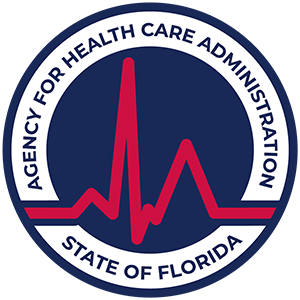How Long Does it Take to Break an Addiction?
Discover how long it takes to break an addiction, the challenges faced, and strategies for successful recovery.
It can be a distressing experience for families who have a teen struggling with addiction. Drug use among youth is a public health problem across the US, with over 45% of teens reporting having tried an illicit drug by the time they enter their senior year of high school [1]. Many report wanting to quit habits such as vaping or cannabis use, but struggle to do so on their own.
Overcoming addiction is not easy, but it is possible. Some say it takes 66 days to break an automatic habit or addiction, but the timeline looks different for everyone.
Several factors can affect a teen's recovery, including the type of addiction, dose, and frequency of use, and presence of co-occurring mental health disorders. Understanding substance abuse in teens and the general timeline for addiction recovery can help parents provide the proper support and intervention.
Understanding The Cycle of Addiction in Teens
Addiction is a long-term and complex disease. It disrupts the brain's normal development and can lead to chronic health problems, decline in school, strained relationships, and even legal issues.
Repeated use of drugs in teens damages the prefrontal cortex. This region influences decision-making, pleasure & reward, motivation, and emotional regulation. This can make it difficult for teens to recognize the harm and long-term consequences of using addictive substances. Some of the most common substance addictions in teens include alcohol, marijuana, stimulants, opioids, and benzodiazepines [1].
Below are some key statistics from the National Center for Drug Abuse to help understand the extent of the substance abuse problem in youth [1]:
- 50% of teens have reported misusing drugs or alcohol
- 1 in 8 teens reports using drugs in the past year
- 62% of teens have abused alcohol by their senior year of high school
- 46% of high school seniors report having tried illegal drugs
- 11.2% of overdoses are among teens
What Causes Teenage Drug & Alcohol Addiction?
The causes of teenage addiction can look different for each youth in recovery. A combination of biology, the environment, and psychological factors can all influence whether a teen will develop a substance addiction.
Some teens may begin to use drugs to cope with underlying trauma, while others are more vulnerable to addiction due to genetics.
Common causes that increase the risk of drug and alcohol addiction include [2]:
- Family history of addiction & genetics
- Physical, sexual, or emotional abuse
- Developmental trauma
- Depression
- Anxiety
- Academic pressure
- Victims of bullying or discrimination
- Experimentation and teen curiosity
- Peer pressure
- Suffering from a chronic illness or medical injury
Recognize The Signs of Addiction
Addiction is not always visible; teens may try to hide their substance use out of fear, shame, or embarrassment. However, some telling signs can point to a substance abuse problem in your teen.
It’s essential for parents to recognize warning signs so they can provide proper intervention and get them into treatment. Some of the red flags include:
- Being visibly drunk or high
- Finding them with drugs or alcohol
- Social isolation
- Secretive or paranoid behavior
- Depression
- Anxiety
- Loss of motivation or lack of pleasure
- Rapid changes in mood
- Irritability, aggression, or violent outbursts
- Frequent flu-like symptoms
- Chronic nausea, diarrhea, or constipation
Timeline for Breaking Different Types of Addictions
The journey to overcome addiction varies in duration and complexity, depending on several factors, including the severity of the addiction, the presence of underlying mental health problems, access to effective treatment, and the presence of a supportive network. Behavioral addictions vs substance abuse addictions also often have their own timelines.
Substance Addiction Recovery Timeline
Substance addiction refers to the compulsive use of substances such as alcohol, nicotine, and other drugs. The duration of recovery from substance addiction can differ significantly depending on the specific substance involved.
For example, breaking a nicotine addiction typically takes around 8 to 12 weeks. On the other hand, overcoming alcohol addiction usually requires a longer recovery period, taking about 3 to 6 months to break the cycle [3].
Behavioral Addiction Recovery Timeline
Behavioral addictions refer to compulsive engagement in behaviors such as gambling, social media, gaming, or internet use. These forms of addiction can be just as challenging to overcome as substance addictions.
Breaking behavioral addictions typically requires a recovery period of 6 months to 1 year. This can vary based on the severity of the addiction, the specific behavior involved, and the teen’s personal circumstances [4].
Factors That Affect Addiction Recovery Timeline
During the recovery journey, teens can face various challenges that influence how long it takes to break their addiction. Some positive factors, such as a solid support system, can speed up recovery times. While other factors, such as underlying mental illness, can make it more challenging [5].
- The severity of the addiction is an influential factor that affects the recovery process. This can include the quantity of drugs used and how long the problem has been going on. Severe addictions often require detox and ongoing intensive treatment in residential rehab for long-term success.
- The type of addiction plays a role in the length of recovery. Different drugs have their own timelines for how long they take to break down and detox from the body. For example, breaking a nicotine addiction to vapes will have a different timeline than breaking an addiction to opioids or alcohol.
- The presence of mental illness in teens can cause an extra layer of complexity when recovering from addiction. Teens who struggle with co-occurring disorders require comprehensive dual diagnosis treatment to focus on both healing the root of their addiction and improving symptoms of their mental health.
- Access to treatment is one of the most essential factors in helping teens overcome addiction. Depending on each youth, they may require different levels of care, such as detox, residential rehab, or intensive outpatient services. Treatment should be tailored to the unique needs of adolescent development and address underlying causes that drive their addiction.
- A solid support system plays a role in the aftercare process to help teens transition back to their everyday lives and prevent relapse. This includes a stable home environment, family involvement in the recovery process, and access to peer support networks.
Frequently Asked Questions
How long does it take to break an addiction?
There is no “exact timeline” for breaking an addiction. Some experts say it takes a minimum of 66 days for the brain to adopt a new habit or break an old one, but this depends entirely on factors such as the type of addiction, dose or frequency of use (if substance addiction), the presence of co-occurring mental health problems, and individual biological factors.
How do I stop my teen from doing drugs?
Although there is no way to make sure your teen never does drugs, there are some ways to help prevent it, such as staying involved, modeling healthy habits, meeting and knowing their friends, setting clear boundaries around drug use, and encouraging healthy activities. If your teen is showing signs of addiction,
What is the number one drug used by teens?
The most commonly used drugs by teens include cannabis, nicotine, prescription medications such as stimulants, and psychedelics such as LSD, magic mushrooms, and MDMA.
What behavioral addictions are common in teens?
Behavioral addictions are on the rise as more teens spend excessive time playing video games, online shopping, and scrolling social media more than previous generations.
How do I know if my teen needs professional addiction treatment?
If you recognize the warning signs of active addiction in your teen, such as being visibly drunk or high, a decline in mental or physical health, and secretive behaviors such as lying, stealing, or manipulation, they could benefit from connecting with a professional inpatient or outpatient treatment program.
Helping Teens End The Cycle of Addiction: Evidence-Based Substance Abuse Treatment in Florida
Lotus Behavioral Health is a residential treatment facility for teens located in Florida. Our programs are designed to support teens and their families with the tools they need to recover from substance abuse, behavioral addictions, and co-occurring mental health disorders.
We offer a blend of comprehensive recovery services such as individual therapy, group therapy, medication management, and skill-building workshops to help teens recover from addiction. Contact our admissions team today to find support for your family.
Sources
[1] Drug Use Among Youth: Facts and Statistics. National Center for Drug Abuse.
[2] Brown, M. et al. (2013). Familial, social, and individual factors contributing to risk for adolescent substance use. Journal of Addiction, 2013, 579310.
[3] Hoeppner, B. et al. (2019). How Many Recovery Attempts Does it Take to Successfully Resolve an Alcohol or Drug Problem? Estimates and Correlates From a National Study of Recovering U.S. Adults. Alcoholism, clinical and experimental research, 43(7), 1533–1544.
[4] Stevens, G. et al. (2022). Making Change: Attempts to Reduce or Stop Gambling in a General Population Sample of People Who Gamble. Frontiers in psychiatry, 13, 892238.
[5] Gutierrez, D. et al. 2022. An exploration of thriving over time in recovery. Science Direct.














.svg)








